Dasylirion wheeleri
Desert Spoon
Desert Spoon is an outstanding accent plant. Leaf stalks are toothed so plant away from traffic areas. Flowers bloom on tall stalks several feet high. Canopy coverage: 20 square feet.
[Read More]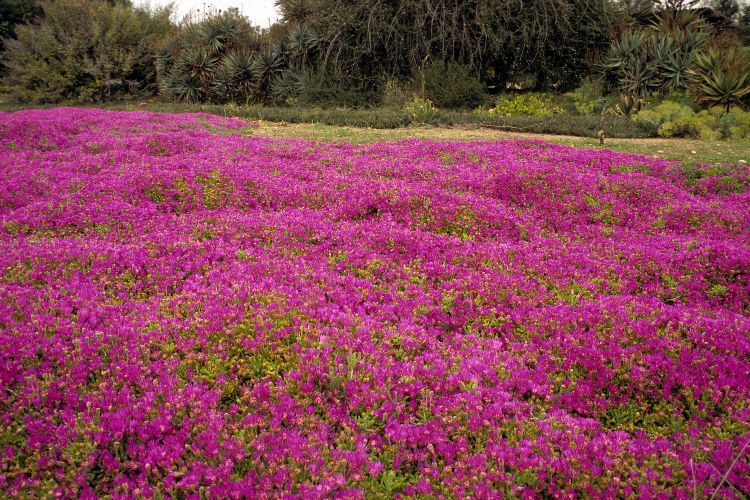
Drosanthemum floribundum
Rosea Iceplant
Iceplant is a vibrant, colorful succulent that serves a dependable role as a groundcover or bank cover. Flowering is quite dramatic as solid sheets of blooms dominate the landscape in late spring. The flowering season lasts just a few weeks, but plant foliage is attractive on its own. Canopy coverage: 7 square feet, but eventual plant spread is considerable, adding to their coverage.
[Read More]Euphorbia antisyphilitica
Candelilla
A small-scale accent that is little bother, with no litter or thorns to contend with. Plant is composed of multiple upright stems that are about 1/4-inch in diameter. Accepts a wide range of sun exposures. Spreads slowly by rhizomes. Excellent choice as a container plant. Its sap can irritate the skin so avoid contact. Canopy coverage: 3 square feet.
[Read More]Euphorbia milii
Crown of Thorns
Locate in a sheltered area out of afternoon sun. Leaves are sparse and are borne a ends of branches armed with sharp thorns. Sap is poisonous and can irritate the skin. Canopy coverage: 3 square feet.
[Read More]Euphorbia polychroma
Cushion Spurge
Cushion Spurge is so-named due to its rounded, mounding growth that reminds one of a chair cushion. Its eye-catching, sulphur yellow color comes from the bracts, modified leaves, that surround the insignificant greenish flowers. Accepts some shade but better appearance in full sun. Sap may irritate skin. Canopy coverage: 3 square feet.
[Read More]Euphorbia resinifera
Moroccan Mound
This succulent has been grown in gardens for decades. The stubby, four-sided stems grow close together to form a solid cover that can spread wide with time. Plant in well draining soil. Best with afternoon shade in hot desert regions. Sap can be poisonous. Canopy coverage: 28 square feet.
[Read More]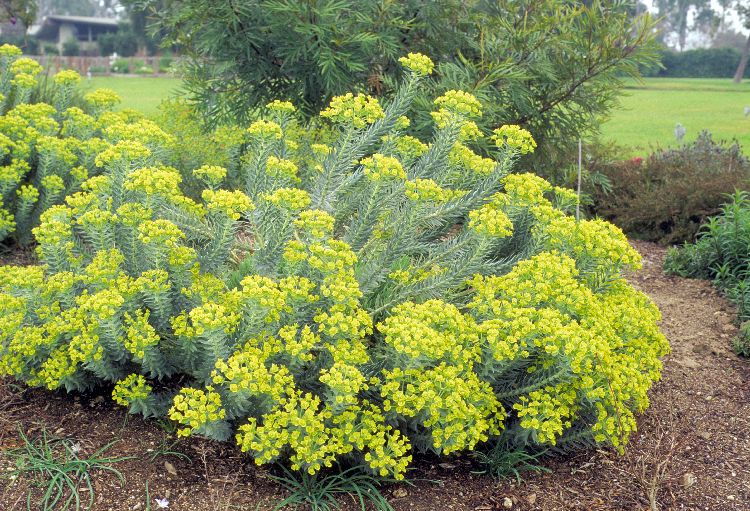
Euphorbia rigida
Gopher Plant
A distinctive plant that you won't soon forget once you see it in the landscape. Brilliant chrome yellow flowers bloom at the tips of 2-foot-long lime green branches. Form and color are dramatic; use as an accent to spice up the scene. Canopy coverage: 13 square feet.
[Read More]Euphorbia tirucalli
Pencilbush
Plant in a protected location. Grown for its distinctive form and cylindrical, pencil-like branches. ‘Sticks of Fire’ produces new growth that is a bright orange and red rather than green. Like all euphorbias, it produces sap that is poisonous and can irritate the skin. Plant away from traffic areas and handle with care. Canopy coverage: 50 square feet.
[Read More]Fouquieria splendens
Ocotillo
Ocotillo is an iconic plant of the desert with a distinctive silhouette. A common name, Buggy Whip, helps describe its form. Canopy coverage: 177 square feet.
[Read More]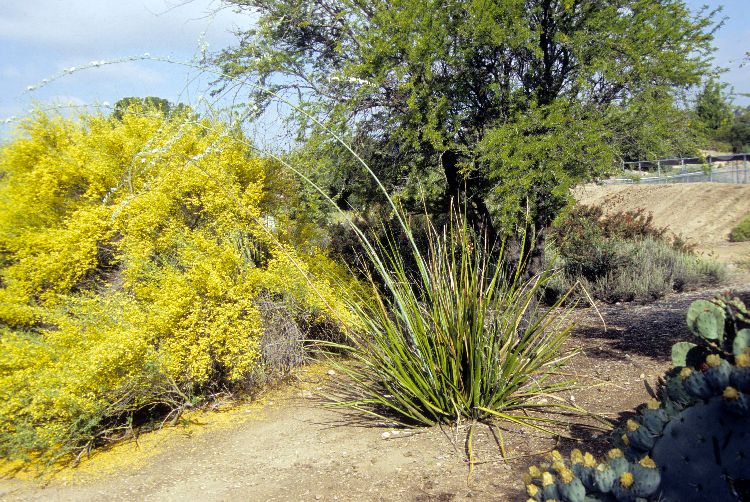
Hesperaloe funifera
Giant Hesperaloe
Not a member of Yucca genus, but it is definitely yuccalike in appearance. Notable feature is tall candelabra of bell-shaped flowers that bloom on tall stalks.
[Read More]Hesperaloe parviflora
Red Yucca
One of the best accent plants around. Common name is Red Yucca, but it is not a Yucca but a different genus, Hesperaloe. Yellow-flowering forms are available. The selection 'Brakelight' produces more intense red flowers. (See photos.) Canopy coverage: 20 square feet.
[Read More]Hesperoyucca whipplei
Our Lord's Candle
Like agaves, it flowers one time and then dies. Flower stalk grows tall—up to 10 feet or more. Generally a few pups (small plants) form around its base to ensure its long-term survival. Accepts some shade. Leaves are armed with sharp points, so avoid planting near walkways. Canopy coverage: 28 square feet.
[Read More]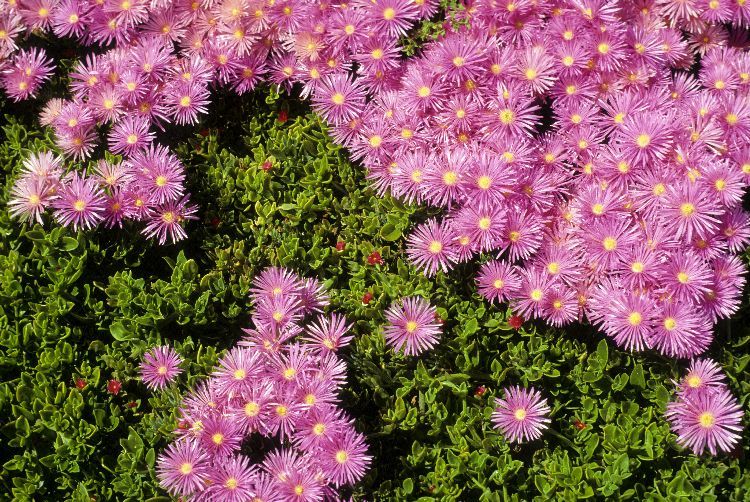
Lampranthus filicaulis
Redondo Creeper
Grows just a few inches high, but spreads as a groundcover up to 3 feet wide. Nice, small-scale cover on a gradual slope. Best in well draining soil. Accepts summer-dry conditions. Canopy coverage: 7 square feet.
[Read More]Lampranthus spectabilis
Trailing Ice Plant
From a practical viewpoint, this is a rapidly spreading plant that works well as a groundcover. But it's the brilliant flowers that catch the eye, blooming for a long period late winter into spring. Plants may be short-lived so be prepared to replant after three or four years. Accepts seaside conditions. Canopy coverage: 3 sqaure feet. Photos courtesy of Pam Pavela.
[Read More]Nolina bigelovii
Bigelow's Nolina, Beargrass
This yuccalike accent plant is a member of the lily family. It grows in a large rosette form with a trunk to 3 feet high. This is topped with 3- to 4-foot-long narrow leaves. Accepts most soils as long as it is well draining. Canopy coverage: 28 square feet.
[Read More]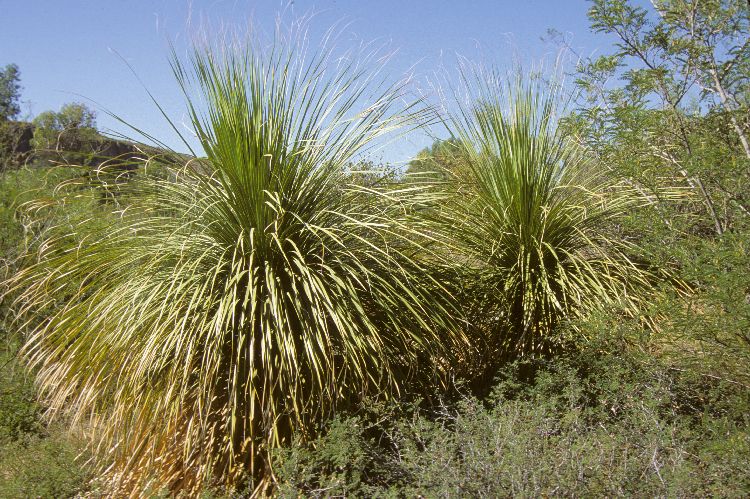
Nolina matapensis
Tree Bear Grass
After many years Tree Bear Grass can take on a form reminiscent of the iconic Joshua Tree. Canopy coverage: 28 square feet.
[Read More]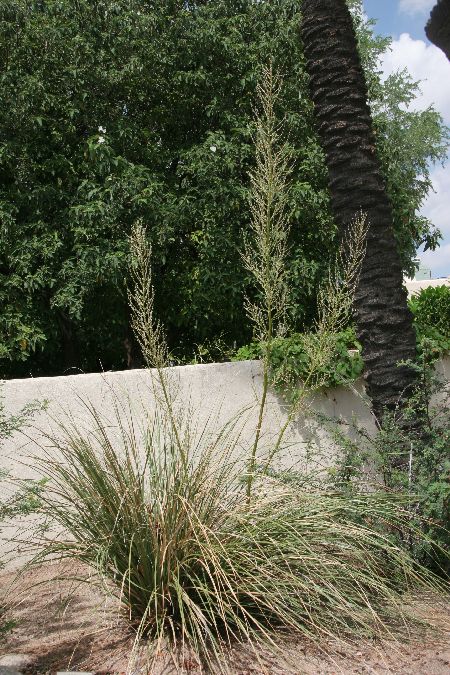
Nolina microcarpa
Bear Grass
The form of Beargrass is a wide-spreading, grasslike clump. Not a plant for close-up viewing, but valued for its ability to thrive in less-than-ideal conditions. Canopy coverage: 50 square feet.
[Read More]Nolina texana
Texas Bear Grass
The thin leaves of Texas Bear Grass are long, up to 4 feet, and leathery in texture. Showy when allowed to drape and trail over an edge or bank. Canopy coverage: 7 square feet.
[Read More]Pachypodium lamerei
Madagascar Palm
The crown of large leaves on top and paired spines along the stems give Madagascar Palm its unique appearance. Prime candidate for container culture. Protect from cold when temperatures drop anywhere near freezing. Canopy coverage: 13 square feet.
[Read More]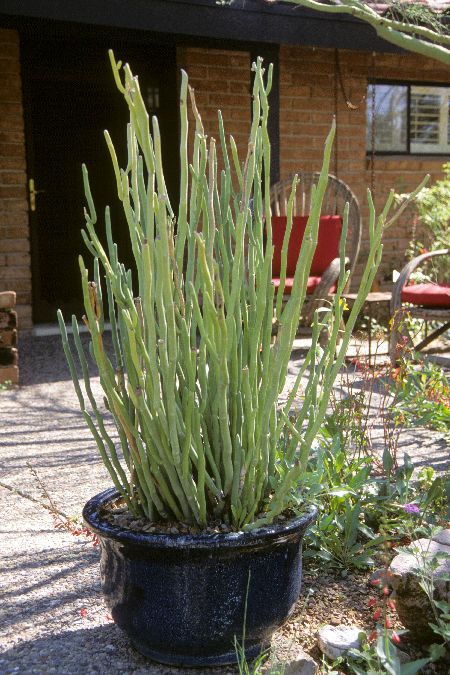
Pedilanthus macrocarpus
Slipper Flower
Lady's Slipper is a candidate for protected locations in cold winter areas, or in containers. Unique vertical form provides close-up interest. Slipper-shaped flowers at the tips of stalks bloom late spring into summer. Canopy coverage: 3 square feet.
[Read More]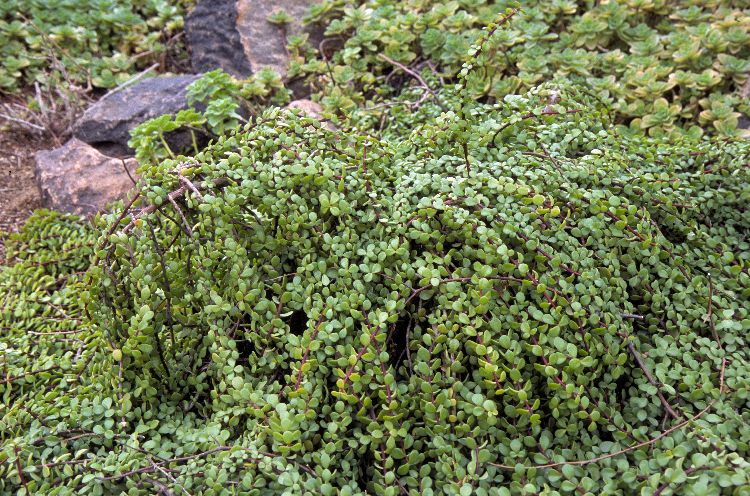
Portulacaria afra
Elephant's Food
Elephant's Food has a sprawling, casual, shrubby form. Small, thick, succulent leaves are similar to those of Jade Plant. Excellent in containers or as an accent among boulders. Better with some afternoon shade in hot-summer climates. Canopy coverage: 13 square feet.
[Read More]